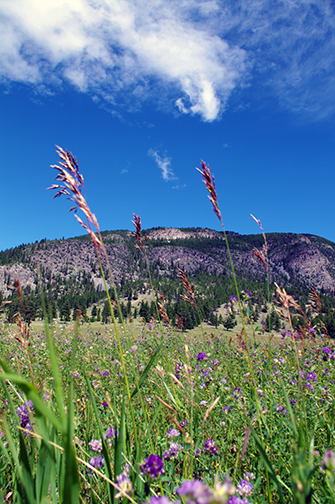Home »

Conservation group to focus on iconic Canadian nature
Nature Conservancy of Canada to protect habitat for 25% of Canada’s species at risk
The Nature Conservancy of Canada (NCC) is aiming to conserve Canada’s most iconic landscapes before they are lost or transformed by human development.
The Nature Conservancy of Canada’s National Board of Directors met in Cranbrook Oct. 1 to 3 to chart a strong course forward in the organization’s efforts to protect habitat for at least a quarter of Canada’s species at risk.

President and CEO John Lounds, says the private land conservation group’s success relies on forming key partnerships with businesses, governments and individuals who share NCC’s vision.
“In the last seven years alone, under the Natural Areas Conservation Program, the Nature Conservancy of Canada has helped to conserve nearly 4,000 square kilometres of ecologically significant land,” says Lounds. “That is equivalent to 916 NHL‐sized hockey rinks every day, and has benefitted more than 165 species at risk.”
The Natural Areas Conservation Program recently received a $100 million funding commitment from the Government of Canada through a new National Conservation Plan. These funds will be matched by private support from individuals, corporations, foundations and other levels of government.
“The Natural Areas Conservation Program provides great opportunities for corporations to work with us,” says Lounds. “For example, they might offset their paper use through conservation, or mitigate industrial impacts with guidance from NCC’s conservation planning experts. Businesses can also invest in our efforts to protect special areas that not only sustain plants and animals, but also provide a haven where people can enjoy nature.”
NCC is currently taking a lead advisory role in the conservation planning for Teck’s Elk Valley conservation lands acquired in 2013. This forward‐thinking project strives to assist Teck achieve a net positive impact on biodiversity with their work in the region, and builds on NCC’s existing conservation work in the valley, including Mount Broadwood and the Elk Valley Heritage Conservation Area.
“NCC’s conservation planning has identified the most important areas for conservation, such as the Canadian Rockies, where wide‐ranging animals such as grizzlies, wolverine, moose and elk still have room to roam,” says Bob Redgate, incoming BC chair, Nature Conservancy of Canada. “As a board member with NCC, I stand behind the practical, business‐like approach we are taking to conserve this country’s most iconic and ecologically important landscapes.”
Over the three days, NCC’s volunteer Board of Directors from across the country will participate in business and committee meetings, as well as a day‐field trip to visit NCC’s conservation projects in the Columbia Valley. The lands around Columbia Lake have been a key focus of NCC’s efforts in the East Kootenay because of their value as a wildlife corridor for migratory birds, large mammals such as wolves, bighorn sheep and grizzly bear, and critically endangered animals such as badger.
The Nature Conservancy of Canada is the nation’s leading land conservation organization, working to protect our most important natural areas and the species they sustain. Since 1962, NCC and its partners have helped to protect more than 2.7 million acres (over one million hectares), coast to coast with more than one million acres (400,000 hectares) in British Columbia.
Nature Conservancy of Canada







